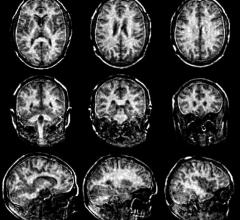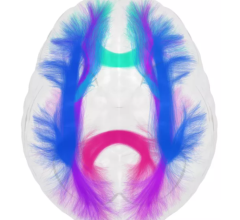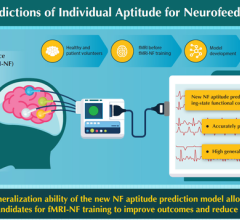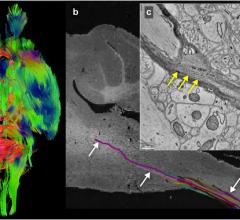
May 8, 2015 — The National Institutes of Health (NIH) released recommendations that provide a framework for a bold and transformative Alzheimer’s disease research agenda. Developed at the recent Alzheimer’s Disease Research Summit 2015: Path to Treatment and Prevention, the recommendations provide the wider Alzheimer’s research community with a strategy for speeding the development of effective interventions for Alzheimer’s and related dementias. These recommendations call for a change in how the academic, biopharmaceutical and government sectors participating in Alzheimer’s research and therapy generate, share and use knowledge to propel the development of critically needed therapies.
In the recent past, Alzheimer’s research has rapidly expanded with the introduction of U.S. Food and Drug Administration (FDA)-cleared nuclear imaging agents to visualize beta-amyloid plaques in the brain. Prior to these agents, the only definitive confirmation of Alzheimer’s was a post-mortem brain biopsy.
“Alzheimer’s research is entering a new era in which creative approaches for detecting, measuring and analyzing a wide range of biomedical data sets are leading to new insights about the causes and course of the disease,” said NIH Director Francis S. Collins, M.D., Ph.D. “In these times of significant fiscal constraints, we need to work smarter, faster and more collaboratively. These recommendations underscore the importance of data sharing and multidisciplinary partnerships to a research community that looks to the NIH for guidance on the way forward.”
More than 60 leading Alzheimer’s and chronic disease experts from academia, industry, nonprofit organizations and advocacy groups joined to develop the research recommendations. Convened by the National Institute on Aging (NIA) at NIH and the U.S. Department of Health and Human Services, with support from the Foundation for NIH, the Feb. 9–10, 2015, meeting drew 500 participants onsite, with another 500 participating via videocast.
The recommendations, which are to be considered by the National Advisory Council on Aging at its meeting on May 12 and 13, outline new scientific approaches to address critical knowledge gaps and propose ways to harness emerging technologies to accelerate treatments for people at all stages of the disease. They also identify infrastructure and partnerships necessary to successfully implement the new research agenda and strategies to empower patients and engage citizens.
Overarching Alzheimer’s disease research themes include
- Understand all aspects of healthy brain aging and cognitive resilience to inform strategies for Alzheimer’s disease prevention;
- Expand integrative, data-driven research approaches such as systems biology and systems pharmacology;
- Develop computational tools and infrastructure in order to enable storage, integration and analysis of large-scale biological and other patient-relevant data;
- Leverage the use of wearable sensors and other mobile health technologies to inform discovery science as well as research on Alzheimer’s disease care;
- Support and enable Open Science in basic, translational and clinical research;
- Change the academic, publishing and funding incentives to promote collaborative, transparent and reproducible research;
- Invest in the development of a new translational and data science workforce; and
- Engage citizens, caregivers and patients as equal partners in Alzheimer’s disease research.
“Determining the best path for progress in Alzheimer’s disease research has been as challenging and complicated as the disorder itself,” said NIA Director Richard J. Hodes, M.D. “These recommendations support a research framework that empowers all stakeholders — including those with the disease or at risk for developing it — to engage in the vital effort to find treatments.”
The recommendations will be used to update and expand specific milestones for achieving the prime research goal of the National Plan to Address Alzheimer’s Disease — that of finding effective therapies to treat or prevent Alzheimer’s disease and related dementias by 2025.
For more information: www.nih.gov


 October 22, 2025
October 22, 2025 









